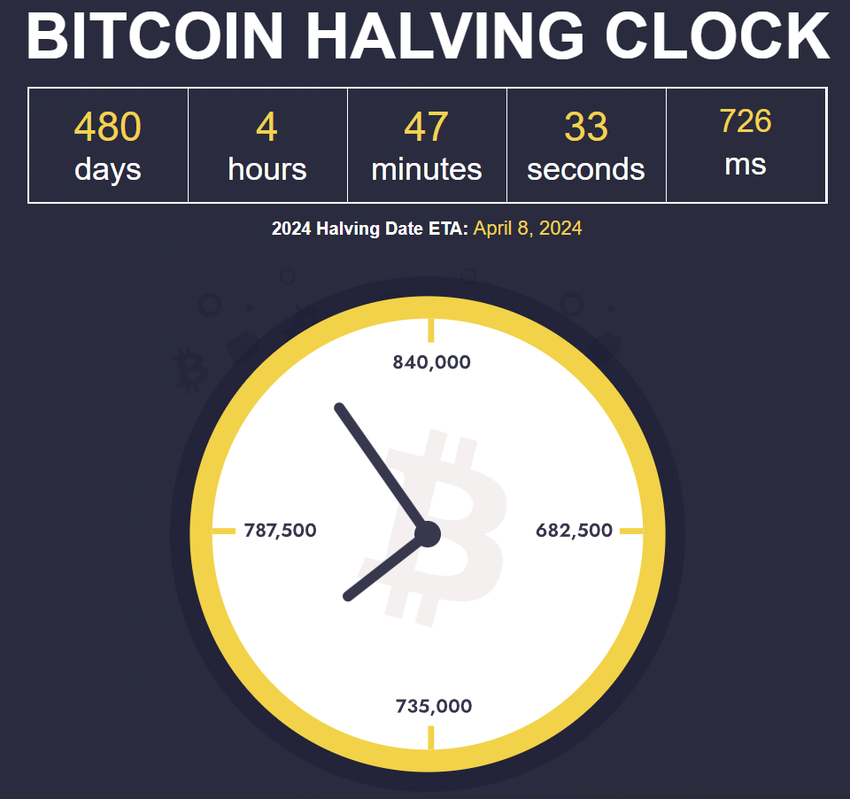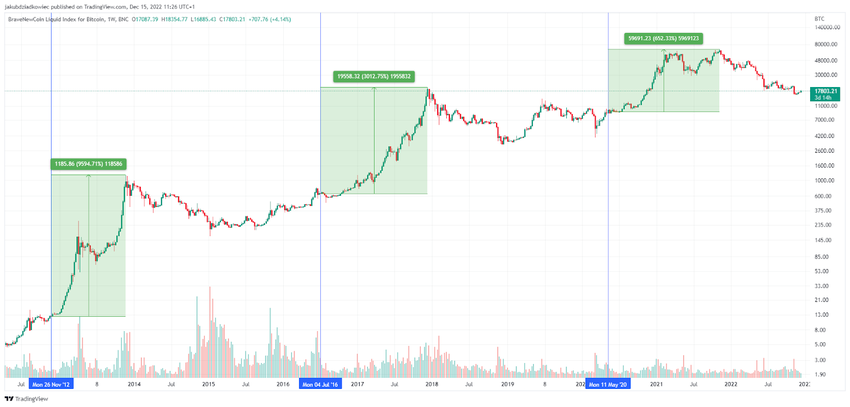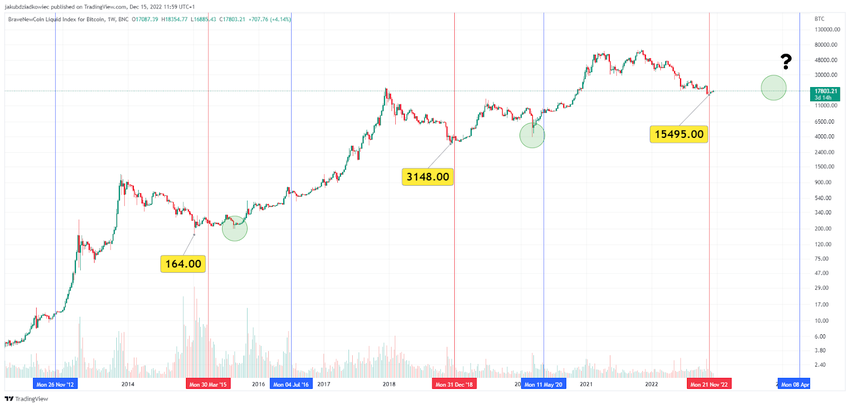Recently, the day passed when the time period leading up to Bitcoin halving was 65% complete. It turns out that in previous cycles, when this threshold was crossed, the BTC price was already past its historical bear market lows.
If a similar situation is taking place today, chances are that last month’s drop to $15,495 was the macro bottom of this cycle. So let’s take a look at how a 4-year Bitcoin halving is affecting the cryptocurrency market, and what are the chances that BTC has already ended the bear market.
SponsoredWhat is Bitcoin halving?
Bitcoin halving occurs approximately once every 4 years. This event is at the core of the hypothesis of the cyclical nature of the cryptocurrency market. Halving causes a supply shock, so many believe it is a catalyst for long-term increases in the BTC price.
The computing machines (mining rigs) that create the Bitcoin network issue new BTC every 10 minutes. In the first four years of the network’s existence, they generated 50 BTC every 10 minutes. When the first halving occurred in 2012, the number of newly issued coins dropped to 25 BTC every 10 minutes. Then, in 2016, it was only 12.5 BTC. Currently – since the 2020 halving – only 6.25 BTC are issued after every 10 minutes.
According to the most up-to-date estimates, the next halving will occur on April 8, 2024. It will result in another reduction of the amount of Bitcoin miners are issuing to 3.125 BTC every 10 minutes.

The basic role of the halving cycle is a predetermined reduction in the issuance of new coins at predictable time intervals. Less BTC on the market (supply in circulation) while maintaining the same or increasing demand causes the asset price to rise.
SponsoredIndeed, the history of long-term BTC price action shows large increases after each halving. Counting from the day of the halving to historical all-time highs (ATH), there were increases of:
- 9594% in 2013-2014
- 3012% in 2016-2017
- 652% in 2020-2021

Bitcoin halving completed at 65%
Well-known on-chain and Bitcoin cycle analyst @therationalroot tweeted a chart of BTC yesterday with three historical halvings. After each of them, he marked the area of 65% halving completion to indicate the price at which BTC was after that period. It turns out, according to the analyst, that today we are at the same point in the halving cycle.
SponsoredWe can easily calculate the day when the current halving cycle reached 65%. This is because it turns out that approximately 4-year cycles last a little longer each time. Therefore, the number of days after which the 65% threshold is reached lengthens:
- after the first halving in the 2012-2016 cycle, it was 857 out of 1319 days, i.e. March 30, 2015 – the price of BTC was $250,
- after the second halving in the 2016-2022 cycle, it was 911 out of 1402 days, i.e. January 6, 2019 – the price of BTC was $3850,
- while currently, after the third halving in the 2020-2024 cycle, it is 929 out of 1428 days, that is, on November 26, 2022 – the price of BTC was $16,500.
Has Bitcoin already reached the bottom?
The most important conclusion of this analysis is that in both previous situations when Bitcoin halving reached 65% (red lines), the price of BTC was already after the macro bottom of a given cycle. In 2015 it was at the bottom at $164, while 4 years later it was at $3148. If the cyclical nature of Bitcoin halving were still to be preserved, the dip to $15,495 on November 21, 2022, would have to be the bottom of the cycle.

On the other hand, this does not mean that now the Bitcoin price will only face increases. In the previous two cycles, Bitcoin continued its sideways price action for about 200 days (2015) or 100 days (2019). If this were to happen this time as well, the start of the long-term uptrend would be between March and June 2023.
Moreover, in both historical cycles immediately before Bitcoin halving, deep drops happened (green areas). Admittedly, they did not lead to new cycle bottoms, but they provided an excellent buying opportunity just before halving. Will history repeat itself this time too? Probably not, but it may rhyme.
For BeInCrypto’s latest crypto market analysis, click here.

